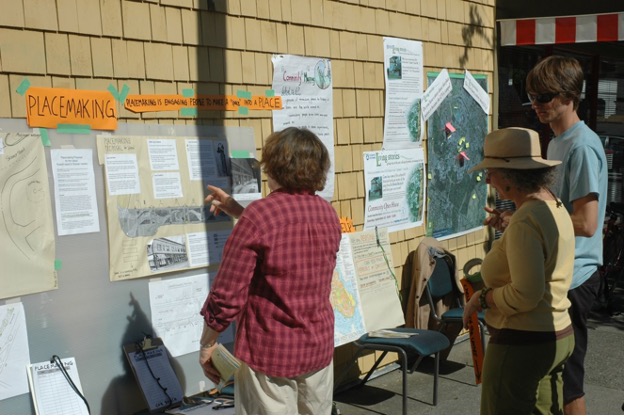
Strategies for planning
After you have started building your CEL partnerships, a little planning can go a long way in setting collaborations and projects up for success. Below are some ways to think of developing your CEL projects.
Explore your intentions for partnering with community
- What do you have to give?
- What do you want to gain?
- What do your past and/or current relationships (volunteering, research, teaching, previous employment, program participation) with community mean to you?
Take time and know time
- Healthy relationships are built on reciprocity, trust, and mutual respect – this takes time.
- Ask yourself: “Do I have available time and energy for adding relationship and project management responsibilities to my teaching workload? How will I organize the partnership(s) and the course so that the approach is feasible?”
- Do not bite off more than you can chew! Small, achievable mutual accomplishments are satisfying, build trust and can be a part of the journey to reaching larger, more complex mutual goals.
- Set goals that are manageable within the time frame of the course.
Discuss expectations: Develop and follow-through on the details of the collaboration
Have open, clear, and respectful communication and foster this in your students. Decide on the best methods to maintain communication (i.e. frequency, mode – phone, email, in-person, tone, level of directness).
- Be reliable and accountable – do what you said you would do when you said you would do it. Be humble, honest and flexible when you cannot do what you said you would.
Consider roles and the desired and required level of commitment (e.g. in time, energy, training, mentorship, funds)
- Ask yourself: “Will my student be ready for the level of knowledge, maturity and skills required for the community partner initiative? If not, will I have time to prepare students for these experiences?”
Ask the community partner to share information and documents needed for students to complete their work successfully.
- Will you collaborate on the syllabus? If so, how? If not, share the course syllabus with the community partner, so they are aware of the broader learning context.
- Will the community partner participate in class (e.g. give a presentation)?
Will you provide funds or other compensation for the community partners’ time? See this resource on gifts and recognition.
Determine the level of flexibility – to make adjustments and changes along the way – appropriate for the collaboration.
Establish a strategy for documenting and checking in on progress. Develop a timeline, set due dates, and track progress. This is key to maintaining accountability for what has been decided on, including maintaining communication when things do not go as planned.
- As an instructor, never assume that things are going as planned. Establish clear and open communication with students and community partners.
- If you cannot attend check-in sessions, it is helpful for the community partner and student to document their conversation. To support this, the instructor can provide a form with a few key questions, and some reflection prompts, and have this submitted, perhaps for a few marks.
Determine if the planned collaboration is research and know community protocols
If so (or if in doubt), contact the Human Research Ethics Board and/or complete a course-based or individual research approval process. Ask the community partner if they have any research protocols that need to be followed. See, for example, PEPÁḴEṈ HÁUTW̱’s Protocols for Engagement. If the community partner does not have clearly articulated protocols, work together to identify key requirements for a respectful collaboration.
Get clarity on the terms of the partnership
- Determine the confidentiality rules (if any) associated with the collaboration.
- Decide how the collaboration will be agreed upon and if a Memorandum of Understanding or another contract is required. A template has been developed to support collaborations; contact the CEL Office for a copy.
- Determine whether there is compatibility or significant differences that will need to be addressed within the partnership.
Student-led community collaborations
Typically speaking, it is best that students do not reach out directly to community to create their own projects. While this can sometimes be successful, and can often be a great learning opportunity for students, community partners have also voiced concern for the amount and ways in which students contact them for these collaborations. If your students are reaching out to community, it is important that you walk them through each step – following the above information. The CEL Office can also provide mentorship and workshops on building relationships and working in and with community.
It is also important that a student first reviews the community partner’s website for already existing volunteer opportunities within their organization. Responding directly to what a community partner is asking for is a good place to start.
